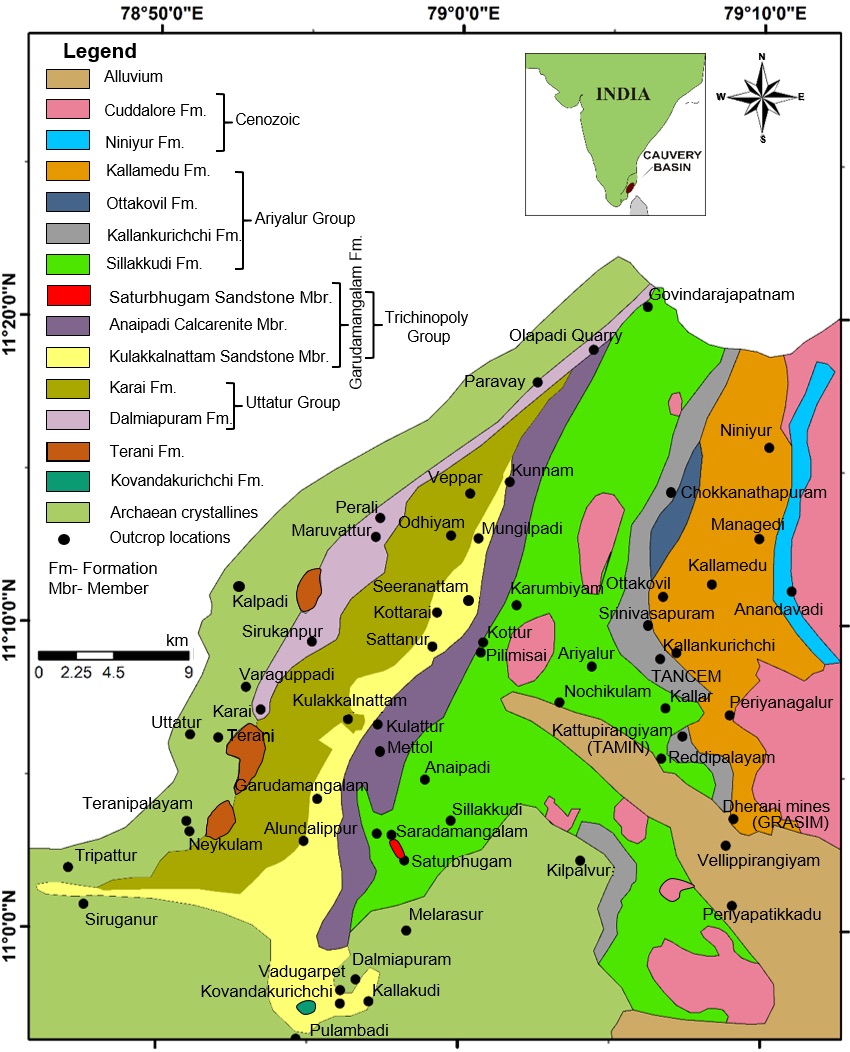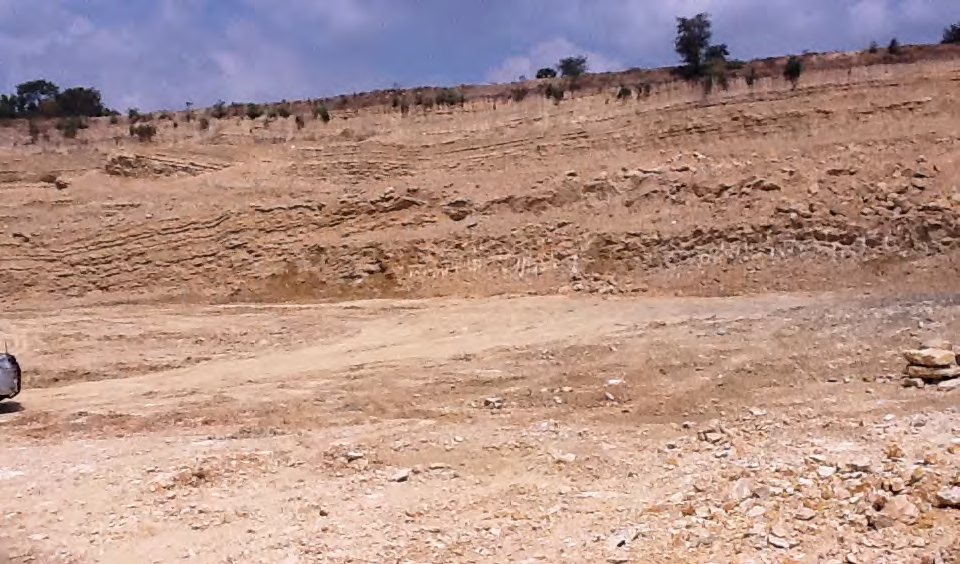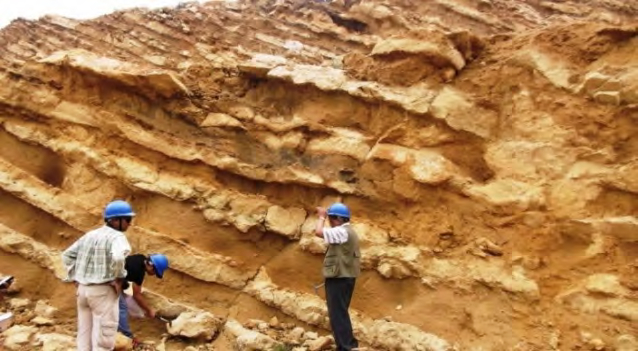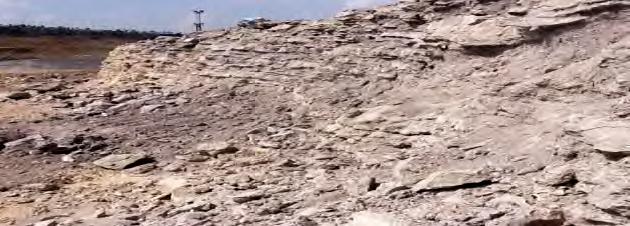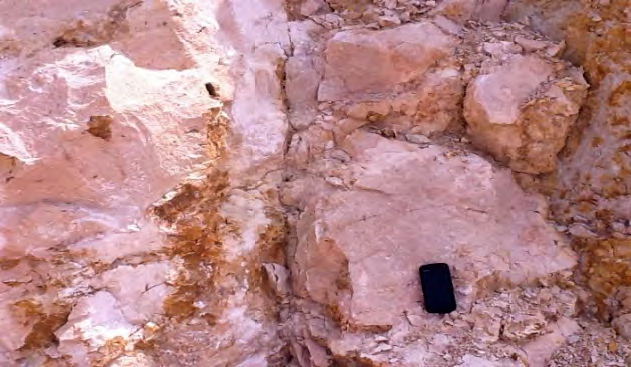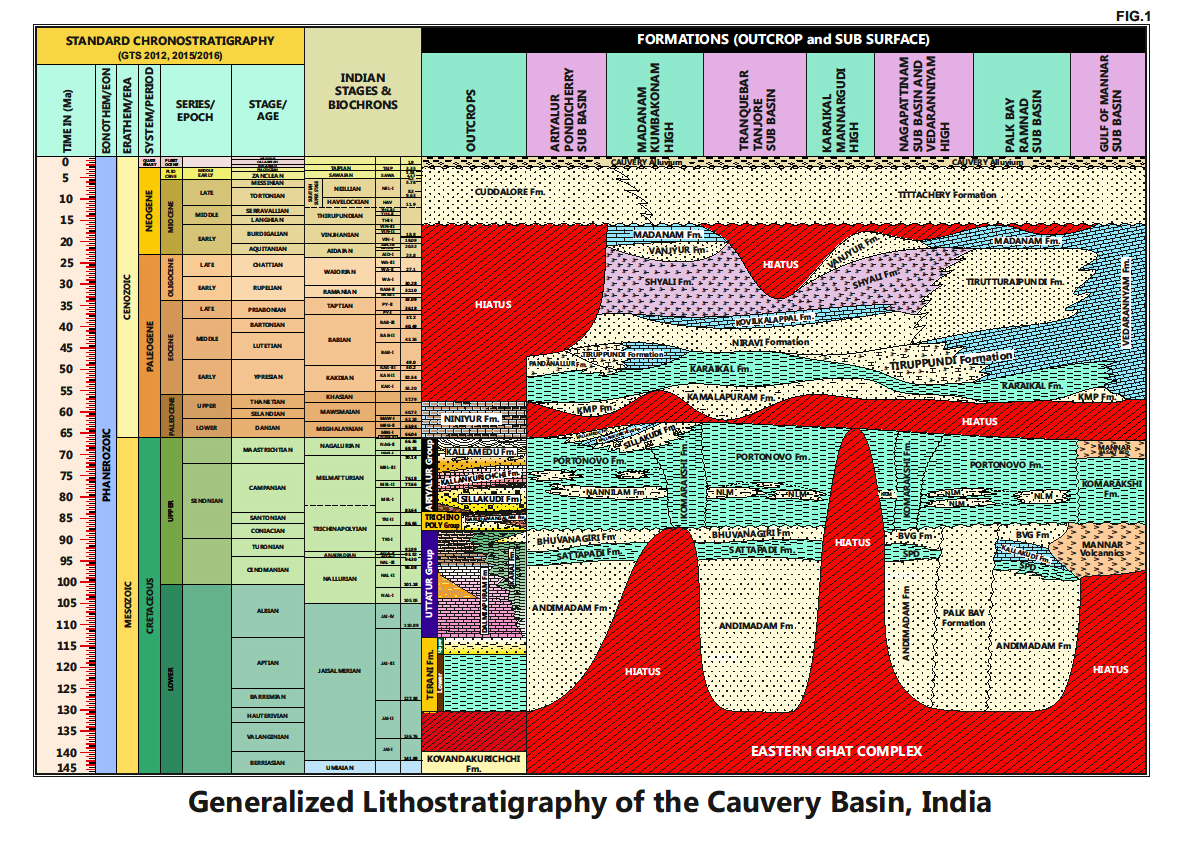Dalmiapuram Fm
Type Locality and Naming
ARIYALUR-TRICHIRAPPALLI OUTCROP: Named after Dalmiapuram Town (Bhatia and Jain, 1969), Ariyalur-Trichy highway, Type locality = Dalmia Cement Ltd Company, Quarry II (Banerjee, 1973). The reference section of the basal part of the formation occurs in a quarry 0.7 km west of Maruvattur village.
[Figure 1: Geologic map of Ariyalur area]
Lithology and Thickness
Limestone to Marl succession: Three members of Coral-algal limestone (CAL), interbedded Marl and Limestone (MBL) with intercalations of gray shale/siltstone, and Marl (ML). Thickness of 230 m in the type area (Sundaram et al, 2001). Exposed sections are about 40 m in the KVC section. Part of Uttatur Gr.
[Figure 2: Field photos: Dalmiapuram succession of (1) Marl, (2) Interbedded marl and limestone, (3) Grey shale, and (4) Coral-algal limestone (provided by A. Nallapa Reddy and R. Nagendra)]
[Figure 3: Generalized Stratigraphy of Cauvery Basin (Provided by A. Nallapa Reddy & R. Nagendra)]
Relationships and Distribution
Lower contact
Para-unconformity with Terani Fm and a representation of Transgressive surface (distinct contact is not traced)
Upper contact
Unconformable contact with Garudamangalam Fm. This unconformity spans the Late Turonian.
Regional extent
The limestone deposits are distributed along western margin of the basin. Dalmiapuram Fm and Karai Fm are coeval. Dalmiapuram Fm is present in mine sections at the basin margin and Karai Fm is exposed in a down dip side (east) of the Dalmiapuram.
GeoJSON
Fossils
Coral-algal limestone Member: Algae- Parachaetetes asvapattii, Sporolithon sp. Lithothamnion sp. Lithophyllum sp., Pseudoamphiroa propria, Neomeris cretaceae, Salpingoporella vericelata and Agardioliopsis cretaceae (Misra et al 2004).
Marl bedded limestone and intercalated gray shale Members - Acanthoceras sp., Mammites conciliators, Nautilus huxleyanus and Turrilites costatus, Foraminifera- Rotalipora gandolfi, Rotalipora brotzeni, Praeglobotruncana stephani, P. delrioensis, Hedbergella planispira and Globigerinelloides bentonensis and Dinoflagellate Cysts-Odontochitina costata, Epelidosphaeridia spinosa, Cyclonephelium cf. C. vannophorum, Dioxya sp., Kiokansium unituberculatum, Ovoidinium verrucosum and Batioladinium micropodium.
Marl Member- Foraminifera Preaglobotruncana delrioensis and P. stephani, Anomalinoides, Gavelinella plummerae, Gyroidinoides globosa, Lenticulina and Quadrimorphina. Ammonites of the Montoniceras inflatum zone (Sastry et al, 1968).
Age
Depositional setting
The Molluscan debris and coralline and algal limestone indicates a shallow-marine deposition (Sundaram et al., 2001). Retrogradational facies with cyclic carbonate deposition (Nagendra et.al., 2011).
Additional Information
The Albian-middle Turonian sections (Dalmiapuram Fm and Karai Fm) of the Uttatur Gp, successively developed in a marine environment. The para-conformable contact lies between the underlying Terani Fm and the overlying Coral Algal Limestone Member of the Dalmiapuram Fm. The abrupt termination of the Coral Algal Limestone is inferred to represent a drowning surface, which occurred due to clastic input and relative rise in sea level (Nagendra et al. 2002a). The lithological relationship of Terani Fm and Dalmiapuram Fm is appended to the end of rifting phase.
